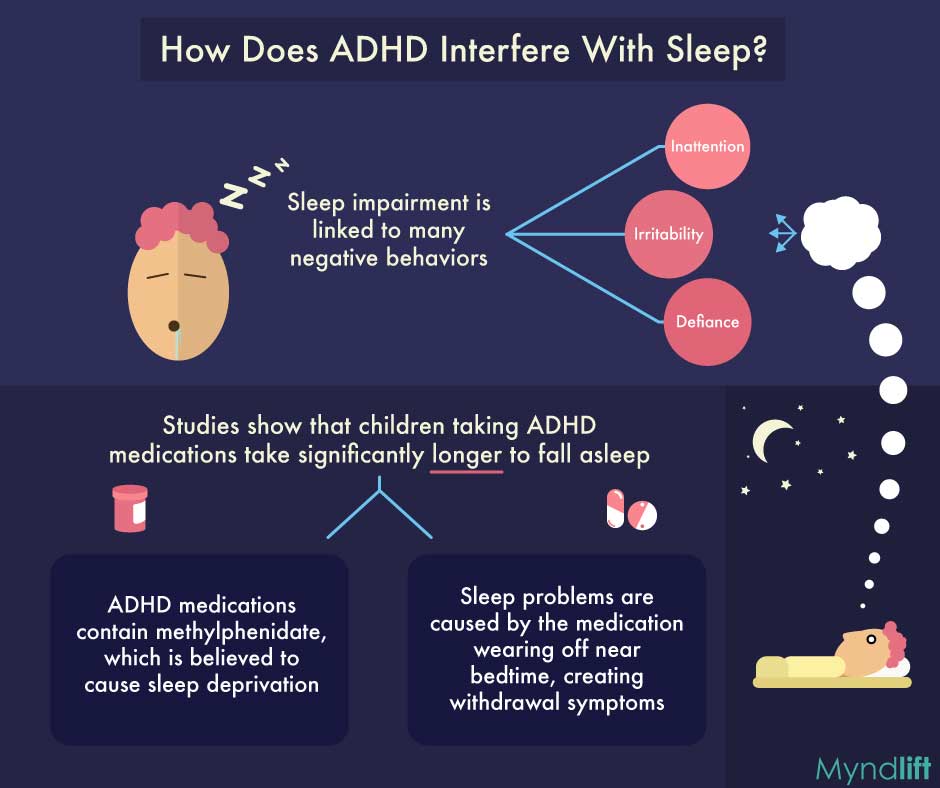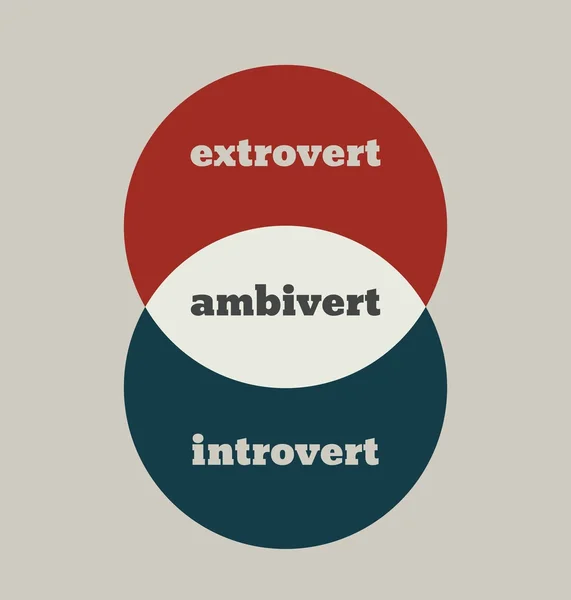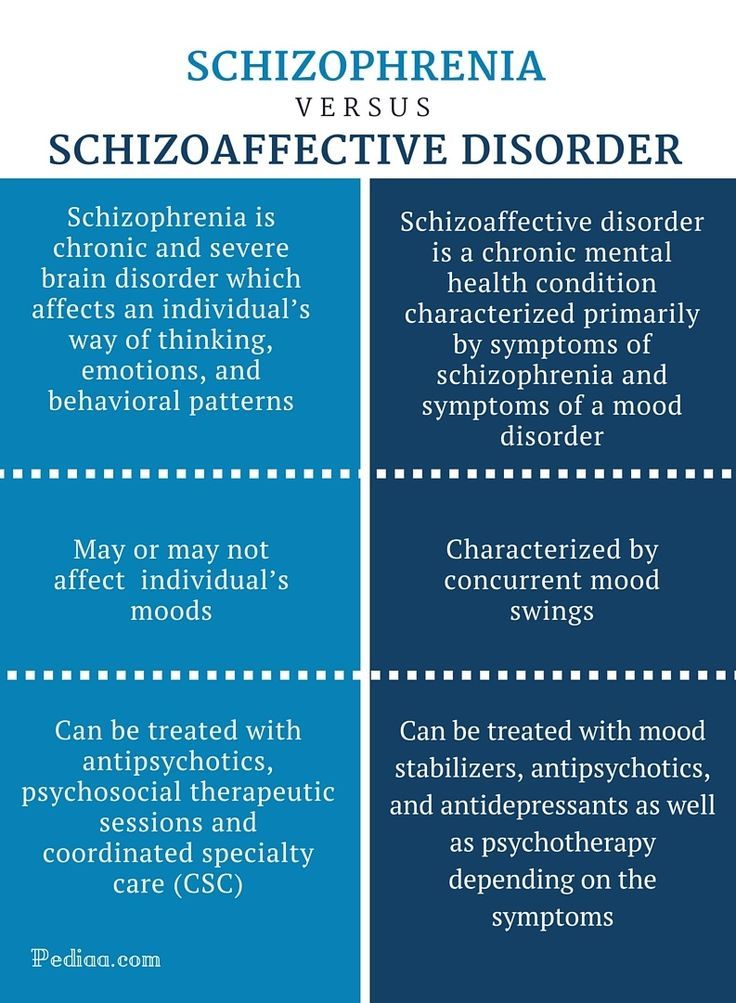Diary of emotions
The Journal That Can Help You Manage Your Emotions
By now, you’ve heard that journaling is good for your mental health. Positive affect journaling specifically has been shown to help manage mental distress, boost overall well-being, and improve our ability to do physical tasks. After all, what’s a better boost to working than the confidence to do it? Just me? OKAY.
Positive affect journaling (PAJ) — sometimes called gratitude journaling — is pretty much how it sounds. A simplified approach to expressive journaling, PAJ encourages you to write 15 to 20 minutes a day about the all the positives — the pluses, ups, and pros — of life and your experiences. It’s pretty much the daily practice of finding the silver lining.
Plot twist: I tried positive journaling in the fiery timeline of our Lord COVID-19 and found it incredibly invalidating to my own nonpositive emotions. If you’re like me, mood journaling might be the answer.
Mood journaling is the act of logging your mood so you can recognize trends, triggers, and use of your energy. You can mood journal just by logging how or what you felt. Or you can go more in-depth by naming your emotion and identifying what caused it, what resulted from it, and whether it was contextually appropriate.
Your goals for mood journaling are personal. Maybe you want to discover what causes your emotions or maybe you’re trying to understand your response to certain emotions.
For me, it was learning what my emotions were.
After many years of forcing positivity, 2020 was my final breaking point. In these trying times, employing toxic positivity was like looking for sunshine in a clogged toilet. The constant search pushed me toward emotional exhaustion, to a point where all I felt was bored… or so I thought.
When I told my therapist that I “knew” there were feelings I should have but just couldn’t feel them, she replied, “Honey, that’s depression.” And I realized I didn’t know my emotions at all.
A common misconception is that depression only (or always) causes sadness but what it actually does is numb your emotional and motivational capacity.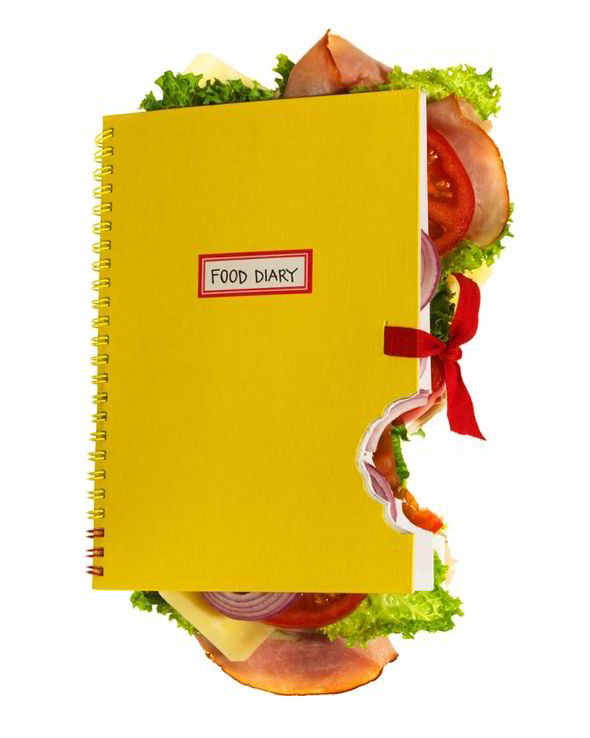
Specifically for me, depression showed up when there were feelings I didn’t want to feel. So, I would enter a state of emotional numbness until my brain decided the coast was clear. It turns out not feeling anything actually meant I was hiding a lot of damn feelings.
Beyond understanding my depression, the other benefits I gained after mood journaling for 6 months, included:
| Benefit | Why it works (for me) | Results |
| stronger emotional regulation | Helps me be less impulsive since I understand how or why an emotion is triggered. | Instead of rushing to react to an emotion (which can generate more guilt down the road), I slow down, take deep breaths, and assess the situation. |
| empowers me to advocate for my feelings | I’m able to clarify and be honest about how I feel rather than worry about how other’s think I may feel. | I can say, “I’m not mad, I’m sad and trying not to cry right now” to open up a conversation.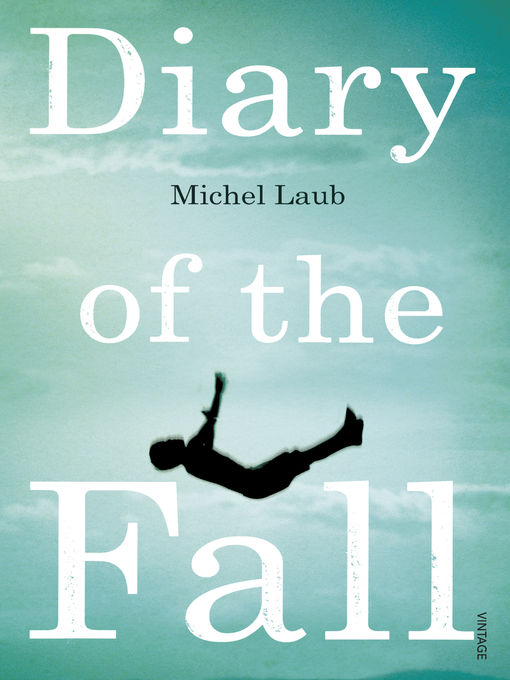
|
| self-affirmation | How and why we feel emotions are unique to us, and the way we choose to acknowledge them requires self-affirmation. | When alone or unable to access care, I’m able to self-soothe and build a stronger, more confident relationship with myself. It also helps me trust my gut instincts. |
| aid for recognizing dissociation | It’s easy for me to feel helpless during episodes of dissociation, but tracking and reviewing the duration of past moments brings me hope. | Recognizing that an episode has stretched over a whole week helps “wake me up” and motivates me to break the cycle or get help. |
| better communication skills | The more I track, the faster I become at recognizing my moods, triggers, and why I feel a certain way. | Instead of ghosting people, for example, I’m able to articulate my bandwidth and show up as my best self. |
1. Identify your emotions
For those who’re like, “This is easy, I’ll just write down how I feel each day!” Good for you! Love your connection to your emotions, truly!
But if you’re more like me, you may want to start with an emotional wheel to help identify your feelings. For example, when I first started mood journaling, I referred to Geoffrey Roberts’ Feelings Wheel to help me label and articulate my emotions.
For example, when I first started mood journaling, I referred to Geoffrey Roberts’ Feelings Wheel to help me label and articulate my emotions.
2. Choose a tracking method
You’ll want a tracking chart that fits on one page so you can look back at it at the end of each month. I personally use my bullet journal and make a three column table with 31 rows (or less, depending on the month) and just jot colors and notes down each day.
Share on PinterestPhotography courtesy of Christal Yuen
Google spreadsheet works well or, if you’re an app person, there are also plenty of mood tracker apps out there.
Note that while research shows apps are good for collection and reflection of emotions, they may not be as helpful with actual logging. Personally, apps didn’t work for me because the way they categorized emotions didn’t resonant with how I felt them.
3. Log it every day
Or at the very least, leave notes to yourself so that you can fill in the gaps at the end of the week. It doesn’t have to take more than a minute, especially if you have a key/legend on your past emotions. For me, not filling out a day eventually became a sign of onset depression.
It doesn’t have to take more than a minute, especially if you have a key/legend on your past emotions. For me, not filling out a day eventually became a sign of onset depression.
Share on PinterestPhotography courtesy of Christal Yuen
4. Review it at the end of the month and make goals for the next month
For the first couple of months, it was pretty shocking to do the math. I discovered I was depressed 56 to 65 percent of the time, anxious 48 percent, and stressed more than 50 percent of the time! I felt positive only about 15 to 19 percent of the time.
Thanks to therapy though, I’ve learned not to get caught up in thinking that the nonpositive emotions are bad. Instead of making “be happier” my goal, I sought to decipher why I was depressed/stressed/anxious so often. I journaled to keep note of my triggers and if I started to notice columns and columns of depressed, I made more plans to practice self-care. Emotion regulation, baby.
It all depends on which ones you want to track! A few mistakes I notice people get caught up in are:
- the need to track everything
- to track what other people are tracking
- to bucket emotions the way other people feel them
Not everyone experiences emotions the same way.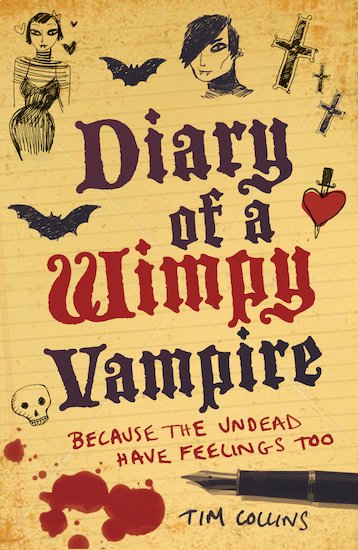 For me, I discovered that depression fits better under “bored” than it does under “sad.” Happiness also didn’t resonant for me so I tapped into calmer positive emotions, like relaxation, joy, and pride.
For me, I discovered that depression fits better under “bored” than it does under “sad.” Happiness also didn’t resonant for me so I tapped into calmer positive emotions, like relaxation, joy, and pride.
To help me better sort and understand my emotional processing, I also created my own emotion wheel. If you’ve gotten this far and feel psyched to decipher your personal emotional code, you might give this exercise a try! Here’s how to do it.
1. Identify your most frequent emotions in a negative/positive category
It may be easiest to start with emotions that feel polar opposites, although this isn’t always the case.
Here’s an example:
- Positive
- joyful
- hopeful
- proud
- Negative
- angry
- sad
- overwhelmed
2. Break down these 6 emotions into more granular categories
You don’t have to do this if you’re struggling to feel the exact words. I didn’t do this until 2 months in, when I realized that my anger had nuance, depending on the situation. For me, being able to name the nuance and get more specific was the key to letting my emotional flood gates go, and also in having supportive conversations with friends.
I didn’t do this until 2 months in, when I realized that my anger had nuance, depending on the situation. For me, being able to name the nuance and get more specific was the key to letting my emotional flood gates go, and also in having supportive conversations with friends.
When I was ready, I looked at my core emotions and thought about past situations that brought up those feelings. I asked myself what made me feel that way.
It might be helpful to use the phrase “When [SITUATION] happened, I felt [EMOTION].” For example, “When they didn’t invite me over, I felt rejected.” This emotion goes in your second tier. Run this scenario several times for each core emotion until you feel like you’ve developed a language that can describe your day to day for a month.
Here’s an example of how my emotions became more nuanced:
| joyful | content, happy, playful |
| proud | respected, creative, accomplished |
| hopeful | safe, relaxed, rested |
| angry | irritated, violated, hostile |
| sad | lonely, depressed, rejected |
| overwhelmed | anxious, scared, insecure |
3.
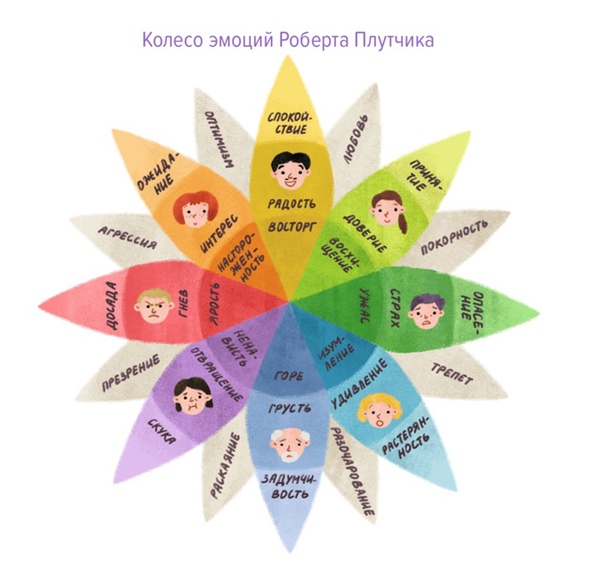 Fill it into a wheel like the one below (optional)
Fill it into a wheel like the one below (optional)Share on PinterestIllustration by Mekhi Baldwin
4. Don’t get locked into your emotions
After 6 months of logging, I’ve since made adjustments along the way. Whether it was new emotions I wanted to explore more or new emotions that arose because of the news cycle, I revisit my emotional wheel each month and decide how it may look or need to look for the next.
Mood journaling is one of those activities where you may have to try it before you understand how it works (for you). I made the mistake of going in with an intention to feel a certain way (aka to feel better), and it backfired by tripping up my ability to be authentic about the process.
I advise taking a more observational and curious approach. Simply seeing what your natural emotional states are may improve mental health and communication, especially with your care providers.
One of my favorite benefits of mood journaling is that I’ve gotten more creative over time. What was originally an ugly page of white-out marks and X’s has evolved into pages of color that even make bad days fun to look at (when I’m in the mood).
What was originally an ugly page of white-out marks and X’s has evolved into pages of color that even make bad days fun to look at (when I’m in the mood).
Christal Yuen is a senior editor at Greatist, covering all things beauty and wellness. Find her musing about therapy on Twitter.
The Journal That Can Help You Manage Your Emotions
By now, you’ve heard that journaling is good for your mental health. Positive affect journaling specifically has been shown to help manage mental distress, boost overall well-being, and improve our ability to do physical tasks. After all, what’s a better boost to working than the confidence to do it? Just me? OKAY.
Positive affect journaling (PAJ) — sometimes called gratitude journaling — is pretty much how it sounds. A simplified approach to expressive journaling, PAJ encourages you to write 15 to 20 minutes a day about the all the positives — the pluses, ups, and pros — of life and your experiences. It’s pretty much the daily practice of finding the silver lining.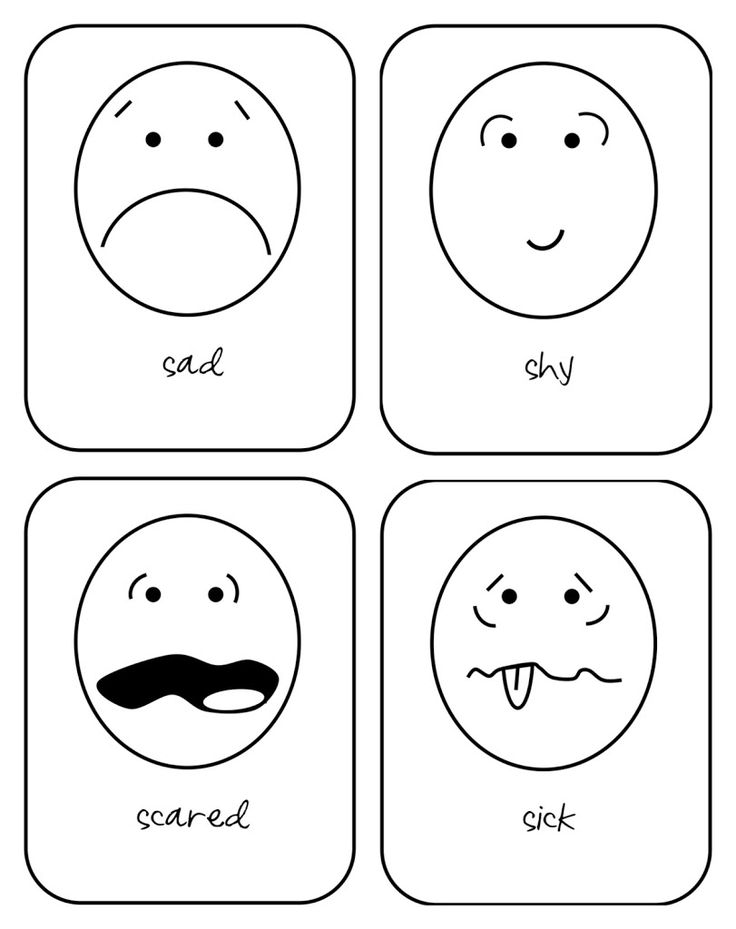
Plot twist: I tried positive journaling in the fiery timeline of our Lord COVID-19 and found it incredibly invalidating to my own nonpositive emotions. If you’re like me, mood journaling might be the answer.
Mood journaling is the act of logging your mood so you can recognize trends, triggers, and use of your energy. You can mood journal just by logging how or what you felt. Or you can go more in-depth by naming your emotion and identifying what caused it, what resulted from it, and whether it was contextually appropriate.
Your goals for mood journaling are personal. Maybe you want to discover what causes your emotions or maybe you’re trying to understand your response to certain emotions.
For me, it was learning what my emotions were.
After many years of forcing positivity, 2020 was my final breaking point. In these trying times, employing toxic positivity was like looking for sunshine in a clogged toilet. The constant search pushed me toward emotional exhaustion, to a point where all I felt was bored… or so I thought.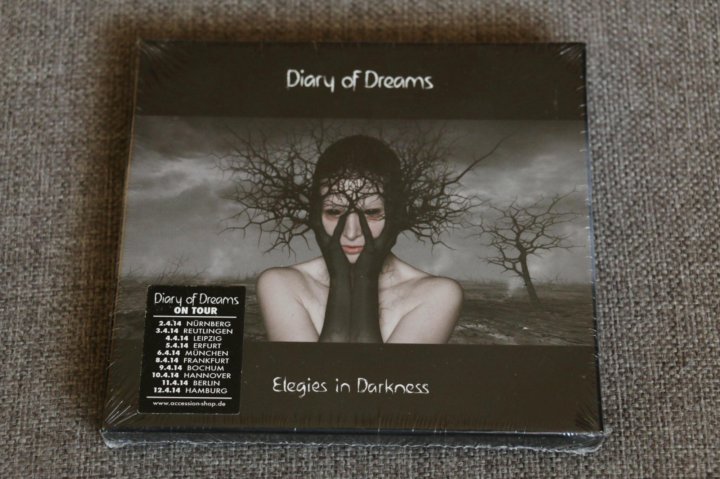
When I told my therapist that I “knew” there were feelings I should have but just couldn’t feel them, she replied, “Honey, that’s depression.” And I realized I didn’t know my emotions at all.
A common misconception is that depression only (or always) causes sadness but what it actually does is numb your emotional and motivational capacity.
Specifically for me, depression showed up when there were feelings I didn’t want to feel. So, I would enter a state of emotional numbness until my brain decided the coast was clear. It turns out not feeling anything actually meant I was hiding a lot of damn feelings.
Beyond understanding my depression, the other benefits I gained after mood journaling for 6 months, included:
| Benefit | Why it works (for me) | Results |
| stronger emotional regulation | Helps me be less impulsive since I understand how or why an emotion is triggered. | Instead of rushing to react to an emotion (which can generate more guilt down the road), I slow down, take deep breaths, and assess the situation. |
| empowers me to advocate for my feelings | I’m able to clarify and be honest about how I feel rather than worry about how other’s think I may feel. | I can say, “I’m not mad, I’m sad and trying not to cry right now” to open up a conversation. |
| self-affirmation | How and why we feel emotions are unique to us, and the way we choose to acknowledge them requires self-affirmation. | When alone or unable to access care, I’m able to self-soothe and build a stronger, more confident relationship with myself. It also helps me trust my gut instincts. |
| aid for recognizing dissociation | It’s easy for me to feel helpless during episodes of dissociation, but tracking and reviewing the duration of past moments brings me hope. | Recognizing that an episode has stretched over a whole week helps “wake me up” and motivates me to break the cycle or get help. |
| better communication skills | The more I track, the faster I become at recognizing my moods, triggers, and why I feel a certain way. | Instead of ghosting people, for example, I’m able to articulate my bandwidth and show up as my best self. |
1. Identify your emotions
For those who’re like, “This is easy, I’ll just write down how I feel each day!” Good for you! Love your connection to your emotions, truly!
But if you’re more like me, you may want to start with an emotional wheel to help identify your feelings. For example, when I first started mood journaling, I referred to Geoffrey Roberts’ Feelings Wheel to help me label and articulate my emotions.
2. Choose a tracking method
You’ll want a tracking chart that fits on one page so you can look back at it at the end of each month. I personally use my bullet journal and make a three column table with 31 rows (or less, depending on the month) and just jot colors and notes down each day.![]()
Share on PinterestPhotography courtesy of Christal Yuen
Google spreadsheet works well or, if you’re an app person, there are also plenty of mood tracker apps out there.
Note that while research shows apps are good for collection and reflection of emotions, they may not be as helpful with actual logging. Personally, apps didn’t work for me because the way they categorized emotions didn’t resonant with how I felt them.
3. Log it every day
Or at the very least, leave notes to yourself so that you can fill in the gaps at the end of the week. It doesn’t have to take more than a minute, especially if you have a key/legend on your past emotions. For me, not filling out a day eventually became a sign of onset depression.
Share on PinterestPhotography courtesy of Christal Yuen
4. Review it at the end of the month and make goals for the next month
For the first couple of months, it was pretty shocking to do the math. I discovered I was depressed 56 to 65 percent of the time, anxious 48 percent, and stressed more than 50 percent of the time! I felt positive only about 15 to 19 percent of the time.
Thanks to therapy though, I’ve learned not to get caught up in thinking that the nonpositive emotions are bad. Instead of making “be happier” my goal, I sought to decipher why I was depressed/stressed/anxious so often. I journaled to keep note of my triggers and if I started to notice columns and columns of depressed, I made more plans to practice self-care. Emotion regulation, baby.
It all depends on which ones you want to track! A few mistakes I notice people get caught up in are:
- the need to track everything
- to track what other people are tracking
- to bucket emotions the way other people feel them
Not everyone experiences emotions the same way. For me, I discovered that depression fits better under “bored” than it does under “sad.” Happiness also didn’t resonant for me so I tapped into calmer positive emotions, like relaxation, joy, and pride.
To help me better sort and understand my emotional processing, I also created my own emotion wheel. If you’ve gotten this far and feel psyched to decipher your personal emotional code, you might give this exercise a try! Here’s how to do it.
If you’ve gotten this far and feel psyched to decipher your personal emotional code, you might give this exercise a try! Here’s how to do it.
1. Identify your most frequent emotions in a negative/positive category
It may be easiest to start with emotions that feel polar opposites, although this isn’t always the case.
Here’s an example:
- Positive
- joyful
- hopeful
- proud
- Negative
- angry
- sad
- overwhelmed
2. Break down these 6 emotions into more granular categories
You don’t have to do this if you’re struggling to feel the exact words. I didn’t do this until 2 months in, when I realized that my anger had nuance, depending on the situation. For me, being able to name the nuance and get more specific was the key to letting my emotional flood gates go, and also in having supportive conversations with friends.
When I was ready, I looked at my core emotions and thought about past situations that brought up those feelings. I asked myself what made me feel that way.
I asked myself what made me feel that way.
It might be helpful to use the phrase “When [SITUATION] happened, I felt [EMOTION].” For example, “When they didn’t invite me over, I felt rejected.” This emotion goes in your second tier. Run this scenario several times for each core emotion until you feel like you’ve developed a language that can describe your day to day for a month.
Here’s an example of how my emotions became more nuanced:
| joyful | content, happy, playful |
| proud | respected, creative, accomplished |
| hopeful | safe, relaxed, rested |
| angry | irritated, violated, hostile |
| sad | lonely, depressed, rejected |
| overwhelmed | anxious, scared, insecure |
3. Fill it into a wheel like the one below (optional)
Share on PinterestIllustration by Mekhi Baldwin
4. Don’t get locked into your emotions
After 6 months of logging, I’ve since made adjustments along the way.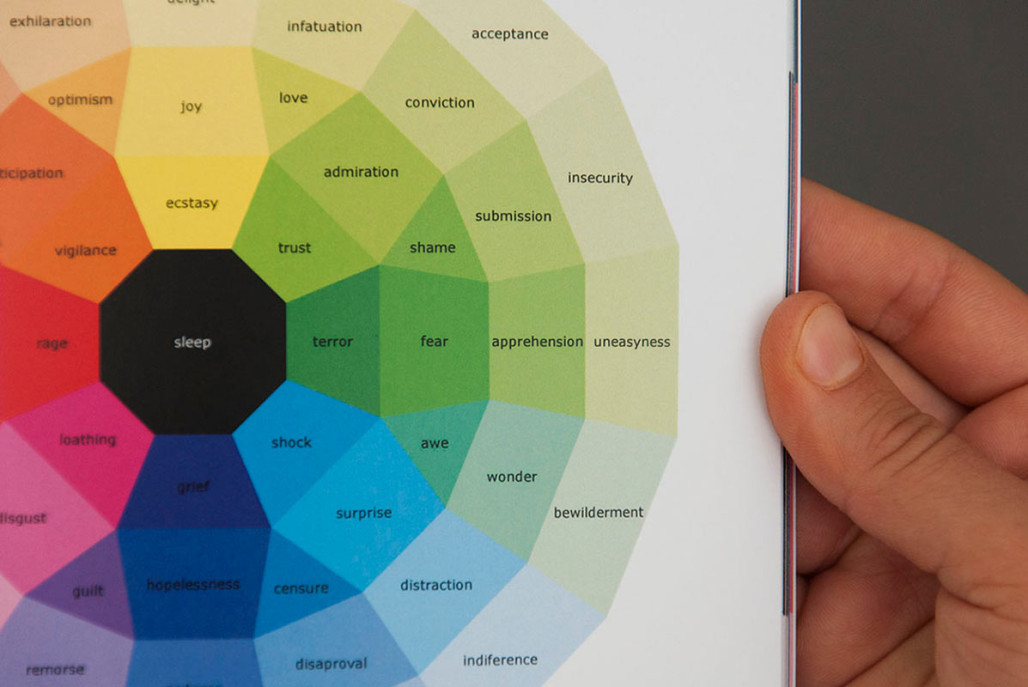 Whether it was new emotions I wanted to explore more or new emotions that arose because of the news cycle, I revisit my emotional wheel each month and decide how it may look or need to look for the next.
Whether it was new emotions I wanted to explore more or new emotions that arose because of the news cycle, I revisit my emotional wheel each month and decide how it may look or need to look for the next.
Mood journaling is one of those activities where you may have to try it before you understand how it works (for you). I made the mistake of going in with an intention to feel a certain way (aka to feel better), and it backfired by tripping up my ability to be authentic about the process.
I advise taking a more observational and curious approach. Simply seeing what your natural emotional states are may improve mental health and communication, especially with your care providers.
One of my favorite benefits of mood journaling is that I’ve gotten more creative over time. What was originally an ugly page of white-out marks and X’s has evolved into pages of color that even make bad days fun to look at (when I’m in the mood).
Christal Yuen is a senior editor at Greatist, covering all things beauty and wellness. Find her musing about therapy on Twitter.
Find her musing about therapy on Twitter.
Emotion/feeling diary practice
Why this practice is needed
Emotions are an important part of our lives, which are given a lot of time in culture (films, books, YouTube videos, games), but we are rarely told how to work with them. Usually, practices for working with emotions are limited to the comments of parents in childhood: you need to control yourself, not to let emotions splash out on others. But no one explains how to do this without harm to oneself, and usually working with emotions in adults comes down to driving them deeper - let them not interfere with living and acting rationally. Unfortunately, this approach leads to stress, burnout and deterioration of communication with others: how to understand others if we diligently learn to forget about understanding ourselves?
Emotions are feedback, the reaction of our body and our psyche to how our dissatisfaction is satisfied (more precisely, how we evaluate the satisfaction of our dissatisfaction) and an indicator of our state. Therefore, the first step to learning to control them is to try to understand yourself better. To do this, you can use the practice of keeping a diary of emotions.
Therefore, the first step to learning to control them is to try to understand yourself better. To do this, you can use the practice of keeping a diary of emotions.
Benefits of an Emotion Diary
An Emotion Diary allows you to track outbursts of bright emotions throughout the day and their possible causes, to understand what happens to your body at these moments. If you keep a diary regularly, you will be able to figure out some trends: what do you do or what do you think about when you are in a good mood? when is it bad? What environmental conditions (environment, noise/quiet levels, even weather) are associated with the biggest/least dips in productivity? Which actions (practices) to change the situation work for you, and which do not? At the same time, a diary can help you reconnect with your body and be more careful about “expending” your health resource: overwork less, rest more often, understand how your physical health is related to emotional well-being.
The method of keeping a diary
The method of keeping a diary is quite simple.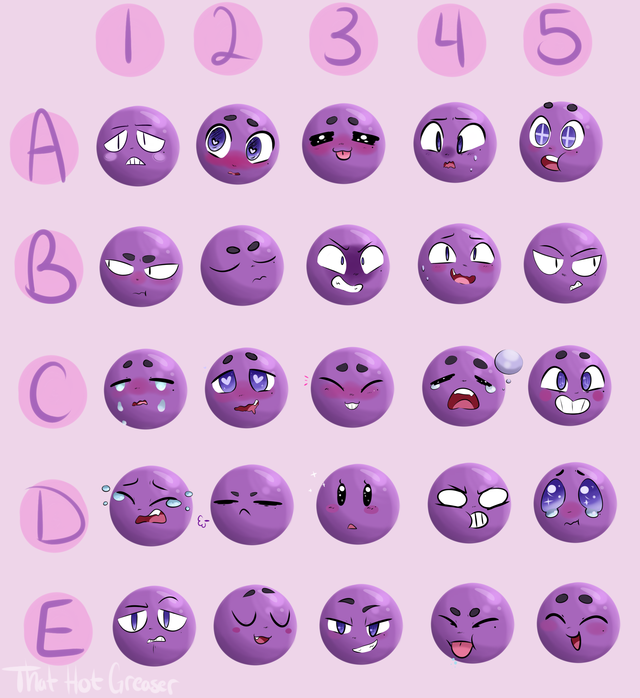 First, you describe the situation in which your emotions manifested, and you describe only the facts: you came there, said something, did something. For example, you describe a conflict: you worked hard, forgot about meeting a friend, didn’t write that I couldn’t come, didn’t apologize. The friend said that he did not want to discuss the important issue that they planned to discuss yet.
First, you describe the situation in which your emotions manifested, and you describe only the facts: you came there, said something, did something. For example, you describe a conflict: you worked hard, forgot about meeting a friend, didn’t write that I couldn’t come, didn’t apologize. The friend said that he did not want to discuss the important issue that they planned to discuss yet.
Please note: only what happened (or did not happen) is described, but the description does not contain your judgments or assessments of what happened. In the next column, you can already write out your attitude to the situation (those are your assessment and judgments): I think that a friend was offended; I am not happy that I caused such a situation, I would like to somehow fix it. The next column contains your bodily sensations that arise when you think about the situation: the stomach contracts, the muscles in the abdomen tighten, the shoulders tense, etc. And, finally, in the last column, the emotion that you associate with this situation and these sensations in the body.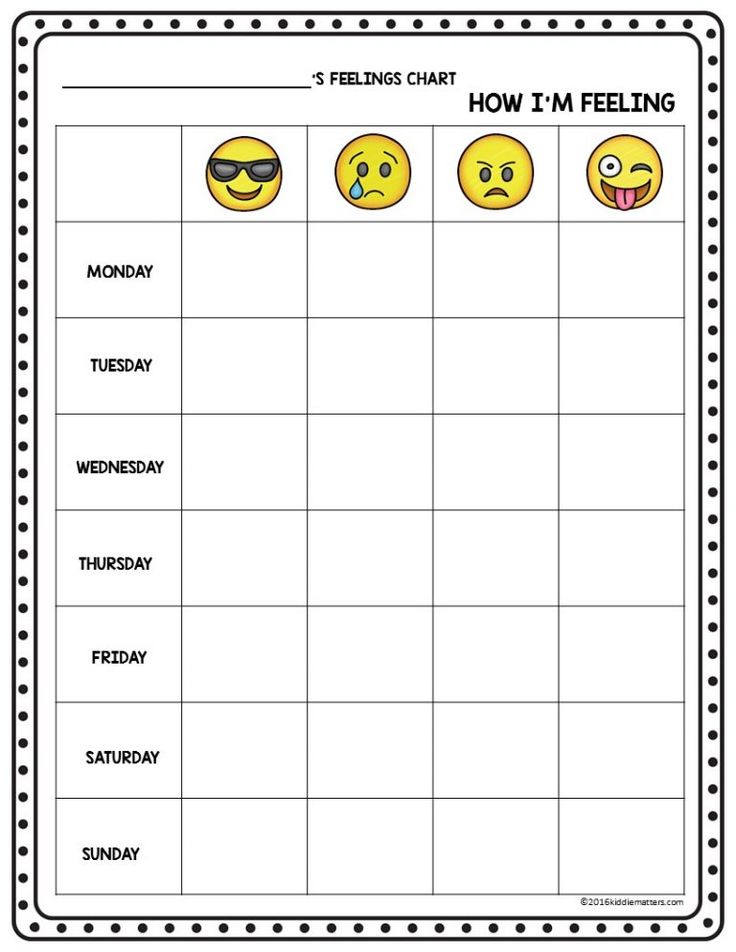 What do you feel? Perhaps guilt, or shame because of this situation? Anxiety? Here you can once again return to the column with judgments / assessments and analyze which of your ideas (judgments) about the situation cause these emotions.
What do you feel? Perhaps guilt, or shame because of this situation? Anxiety? Here you can once again return to the column with judgments / assessments and analyze which of your ideas (judgments) about the situation cause these emotions.
A list of emotions that you can focus on:
From the book "NVC: Theory and Practice" by V. Borovikov, M. Kevats, I. Soyfer - organizers of the Russian NVC communitySeveral important points to consider when describing emotions:
- Emotions are always a description exclusively of you and your inner state. If you, speaking about emotions, name something else - most likely, this is not an emotion, but your assessment of the situation, a judgment about it (“I feel like a failure”, “I feel that I am good at writing posts”)
- If, when describing emotions, you assign responsibility for them to someone else (that you are the object on which the action is performed, and not the subject who actively experiences emotions himself), these are also not emotions, but something else.
 If you are talking about yourself in the passive voice (“I feel like a failure / king of the hill”), then this is not an emotion, but an assessment.
If you are talking about yourself in the passive voice (“I feel like a failure / king of the hill”), then this is not an emotion, but an assessment. - If after the named emotion there is a “what” construction (“I feel that”, “unpleasant that”), then this is also not an emotion, but a judgment or thought, an assessment of the situation: “I feel that I am good at writing posts” , "It's embarrassing that I caused this situation."
- If you are talking about another person, these are definitely not emotions (because you experience emotions yourself, actively): “I feel that my colleagues can be relied upon”, “it seems that a friend was offended.” At the same time, you may experience emotions (joy, gratitude, anxiety, etc.) because of your assessments of the actions of other people, but the emotions themselves are self-centered (only about you).
In the above example of a conflict with a friend, the expression of emotion could be: "I feel sad/guilty (because of this whole situation)". Or "I feel relieved and joyful (after our reconciliation)." In brackets are explanations that you can omit in your diary.
Or "I feel relieved and joyful (after our reconciliation)." In brackets are explanations that you can omit in your diary.
In order to better understand what is happening to you, you can limit yourself to the 4 columns described above (situation, assessment of the situation, bodily sensations, emotions). But since emotions operate at the level of the moment (out of the 4 levels of attention / consciousness that we offer), it is highly desirable not only to analyze them “for the future”, but also to somehow cope with the moment. Therefore, we also include the fifth column - "actions to change the situation." In nonviolent communication (NVC) practices, they are called "strategies", but since the word "strategy" is reserved for other concepts in systems thinking, we will simply call them "actions".
As a result, we get the following type of diary:
| Situation (Facts) | Assessment of the situation (thoughts, judgments) | BEFORY FAILY | Emotions | Acts to change situation |
Tools
You can keep such a diary in different programs. You can lead, for example, in Notion or another program in which you keep most of the information that is important to you. You can try apps on your phone — the App Store and Google Play have enough different mood diaries in Russian and English. Apps like this look like this:0005
You can lead, for example, in Notion or another program in which you keep most of the information that is important to you. You can try apps on your phone — the App Store and Google Play have enough different mood diaries in Russian and English. Apps like this look like this:0005
I prefer just a table in Google Sheets, because it's easy to customize the diary of emotions for yourself, it's easy to connect with other practices (for example, the economy of time, which I also transfer to Sheets now), and, of course, it's convenient to visualize and analyze statistics. The template of the diary of emotions for Google Sheets can be downloaded from the link (copy the file to yourself or download, no need to change/fill in the source!).
Recommendations for keeping a diary and improving practice
Try to start keeping a diary in the proposed form (you can fill in not all columns, but only those that are obtained). Analyze emotions several times a day (or at least once at the end of the day). After a few weeks, you can try to deduce patterns: what emotions are most often manifested in what circumstances, what actions to improve the situation helped well, and which did not. You can try to build graphs, add columns (for example, the weather - it affects us more than is commonly believed) or remove those that you rarely use (I do not recommend excluding the column with bodily sensations), or choose an application / program that is suitable for your goals are better.
After a few weeks, you can try to deduce patterns: what emotions are most often manifested in what circumstances, what actions to improve the situation helped well, and which did not. You can try to build graphs, add columns (for example, the weather - it affects us more than is commonly believed) or remove those that you rarely use (I do not recommend excluding the column with bodily sensations), or choose an application / program that is suitable for your goals are better.
I do not recommend using a pen and paper to keep such a diary: it will be much more difficult for you to regularly carry them with you, track statistics, and analyze it. If you like to write in notebooks, then you can leave the notebook for some near-philosophical notes that you do not plan to develop further (and therefore will be outside your zettelkasten / slip-box) and for splashing out emotions. They should separate information storages: store all information valuable for the future in electronic form, with access from any of your devices, and leave the information that is valuable "in the moment" or as a curious (but nothing more) archive of the "past self" on paper.
Instead of a conclusion
In any case, remember that the main goal of this practice is to learn to understand yourself better and more often choose effective actions to improve the situation. Ultimately, this will help you not only understand yourself better (and blame less for something that doesn’t work out), but also better understand others: it’s just as difficult for them to “boil” in the cauldron of their own emotions and thoughts, judgments, assessments . You will also be able to gain a more complete connection with your own body: understand what and where you are tense, where there are clamps (especially when you experience negative emotions), try to relax tense muscles in order to regain control over emotions. And, of course, to clearly understand the main thing: that it is not the situation (list of facts) that in itself evokes emotions, but our assessment of the situation and faith in this assessment.
Anna Lubenchenko, teacher of SHSM
Scroll
5
Leave a comment! Write what you think about the article. x
x
Diary of emotions - exercise - Psychologos
April 15, 2018, 2:35 pm
Author: N.I. Kozlov, Doctor of Psychology, Professor
Rector of the University of Practical Psychology
The distance traditionally begins with the exercises “I remove the nets”, “The diary of emotions”, “The diary of success”, “I go to bed on time” and “Order on the table”. Start Your Distance!
I have an even and positive emotional background, I perfectly track all my emotions, I always understand where they come from and why.
What is your mood during the day? Do you notice what causes the change in mood? Do your decisions often depend on your moods? Our emotions and moods are elements, and if we do not subdue this element, it will subdue us. The “Emotion Diary” exercise, in which you start an Emotion Diary and track in detail the changes in your emotions, moods and states, lays the foundation for managing emotions.
This exercise will help you:
- Take a closer look at your emotions and moods.

- Learn to solve at least simple problems with your mood.
- Make a list of the reasons for the appearance of your emotions and thereby create a basis for more serious work with them.
Girls will most likely find that things are not as bad as they think, while men, on the contrary, will be able to set some tasks for themselves. For almost everyone, the emotional background will become smoother and higher. Keeping an emotional diary is the key to emotional stability and a positive attitude.
What is the Diary of Emotions?
Diary of emotions is a graph with a digital scale, where above 0 are all good emotions and states for you, and below - all bad ones. Quite primitively, it's like this:
Draw and start keeping a diary, marking your condition on the chart every half an hour.
- For low emotional people - every hour. For highly emotional people - every 15 minutes. In any case, your task is to make at least 7 measurements of your emotional state every day.

Though not immediately, but in the process of working with the diary, come up with an understandable and clear scale suitable for you personally, by which you evaluate your emotions. Here are examples of scales made by other remote participants:
- Horror - darkness - bad - normal - good - super - delight - ecstasy.
- Catastrophe - problem - sour - ok - not bad - good - excellent.
- "Insanely good", "Excellent", "Very good", "Good", "Normal", "Average", "So-so", "Bad", "Very bad", "Couldn't get worse".
- Powerlessness and longing - acute pain - cold rage - dim calm - warm comfort - joyful lightness.
- World sorrow - aggression and irritability - calm absence and sadness - calm presence - working condition - joy - Sunshine.
Here you can download this version of the scale of emotions:
- Scale of emotions.xlsx
- Scale of emotions.pdf
How to conduct observations and records?
Every 30 minutes, mark your state in the Emotion Diary and accompany each mark with comments, that is, write down the action or cause of the emotion that has arisen. For example, they made a mark on the “So-so” state. Recorded a comment: “I really want to sleep” or “I had a conversation with my wife in a raised voice” or “I’m walking down the street, it’s cold, I’m hungry,” etc.
The more difficult the situation and the stronger your emotional reactions, the more often mark your state (every 15 minutes... every 5 minutes... every minute...) and analyze it in more detail.
Help: iMoodJournal app for iPhone and iMoodJournal for Android
What to do with all this?
Sometimes you don't have to do anything else. If everything suits you, you're OK (or see Tips for the smart ones). In any case, the mere fact of keeping a diary makes your condition more stable, and the emotional background more positive.
If everything suits you, you're OK (or see Tips for the smart ones). In any case, the mere fact of keeping a diary makes your condition more stable, and the emotional background more positive.
If in the process of keeping a Diary you realize that you are behaving like a small child with your emotions, then you can correct yourself.
My favorite pen stopped writing and I got upset. I got upset over nonsense, and because of this I got angry with myself ... And if someone talked to someone on the phone and is now very pleased, then what does this mean??
That's right, don't play kindergarten. Just don’t hang your nose like that, don’t be offended and don’t get angry for no reason, don’t be jealous for no reason. Instead, ask yourself, “How can I improve my mood right now?” There are a lot of options: sometimes it helps to change the posture / facial expression, sometimes to say / write warm words to loved ones, and sometimes just open the window for airing. See Mood Enhancers.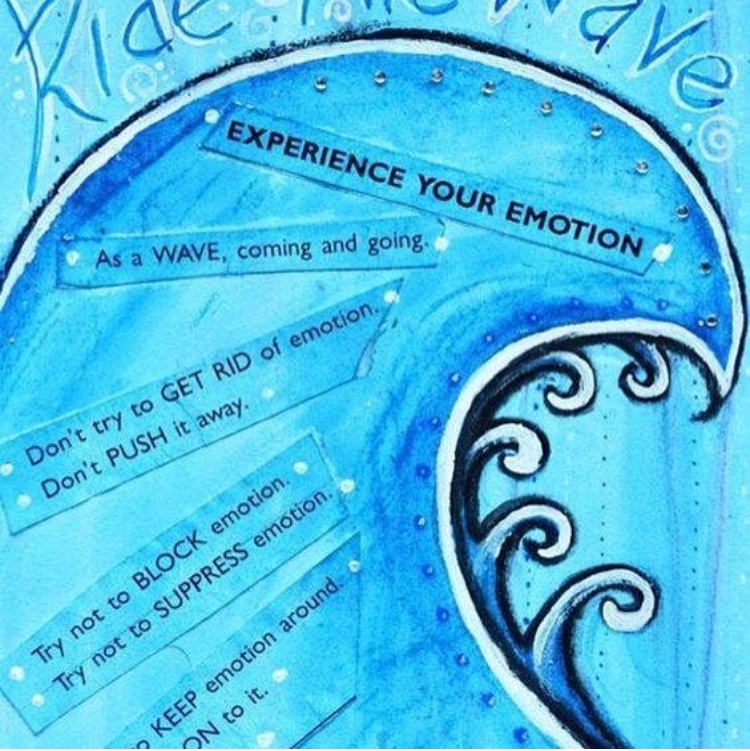
Advanced, Or Analyze This.
This level of exercise will be an excellent "bridge" to other exercises: "Sunshine", "Calm presence", etc.
So, as before, analyze the results every day and every week.
In addition to identifying the predominant state, analyze the following points:
- What activities destabilize, worsen your mood. Why?
- And what can be done or how to treat the matter so that it is more pleasant for you?
- What activities or activities have lifted your mood, improved your condition?
Write down your findings and keep a list of "mood boosters" and things that help you stabilize your emotional background in situations that can shake it up.
At the end of each week draw the resulting conclusions.
Volume of the planned result (ORM)
- I am used to keeping a diary of emotions, I make (for example) 14 marks for myself (that is, how much I have planned) per day.

- Compiled a list of reasons that raise and lower my mood.
- I found my own ways to quickly put myself in order.
Tips for smart people
- If the Diary tells you that you usually have a normal state without negativity, this is not OK at all. For smart and developed people, the norm is not just normal, but a magnificent, cheerful and maximally collected state. Yes? Is everyone always at this level? If not always, set the appropriate task.
- Compiling the scale of your Diary is not really an obvious and very creative task. Read about it on Psychologos Scale of Emotions: Steps from Primitive to High Philosophy
- Diary of emotions business people perfectly complement the Diary of efficiency.
Video: Tips for this exercise
- Author N.
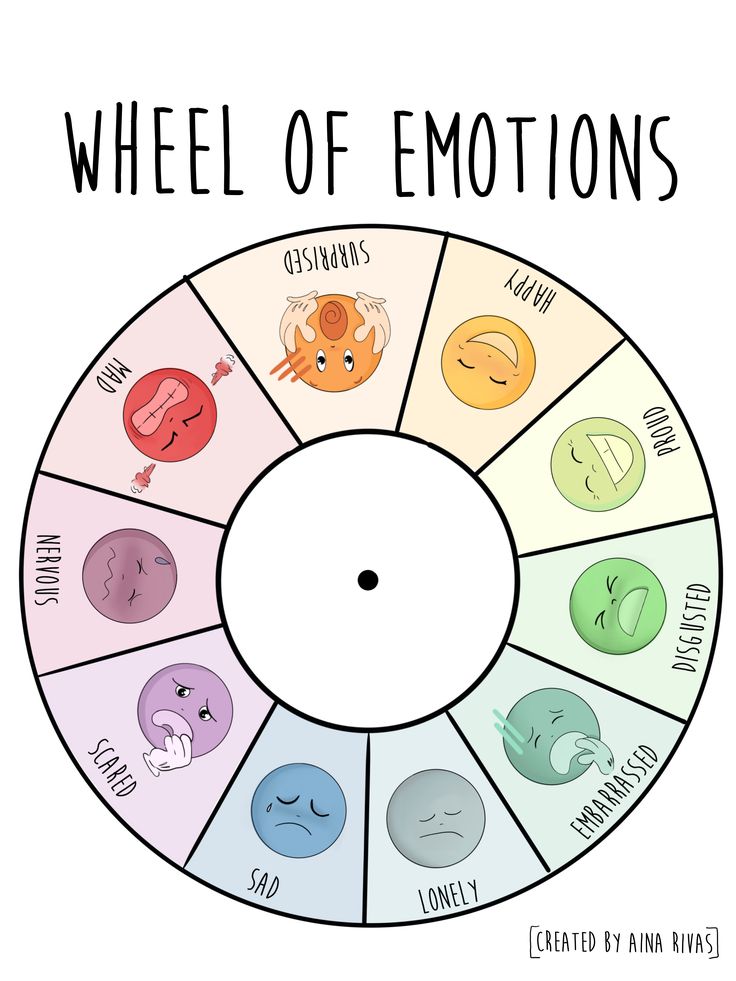 I. Kozlov
I. Kozlov - Distance
- Exercise Distance
- 7. Life, activity
- Course - Inner goodness
- Emotional stability
- Video
Comments (6):
Guest, April 30, 2018 5:00 pm
Every 20 minutes means my alarm goes off : I get up I do physical. exercise of the day (alternating squats and planks) I drink half a glass of water I sit down and correct my Posture. I rate on an emotional scale. So, thanks to the Diary of Emotions, at the end of the day I have 300 squats / 13 minutes of standing in the plank, 2 liters of water, 31 posture corrections. And a bonus - a better sense of time! Previously, this exercise was one of my least favorite and useless, now that I have filled it with benefits for myself, I have fallen in love with the diary of emotions and want to do it for the rest of my life. =)
2
replies
Guest, April 25, 2020 at 09:38
Super!!!!
Guest, October 2, 2021, 11:58 PM
Hello. How are your emotions right now? Do you keep a diary?
How are your emotions right now? Do you keep a diary?
Guest, April 30, 2018, 5:04 pm
To include the whole family in the process, instead of points, you can create a scale of hearts - heart + heart with strokes around, like sun rays and with a wide smile - this is euphoria; a heart with eyes and a smile is joy, hearts without a smile are a neutral state, a heart with an arrow is sadness, a heart broken in half is really bad. 9April 30, 2018 frequent stay (in the morning - a bedroom or near a bathroom, in the afternoon - near a desktop, in the evening - a kitchen, a hall or a passageway in an apartment), put or hang a fountain pen, felt-tip pen next to it.
Guest, September 27, 2019, 10:48
I advise everyone to try it! I have become much more in control of my emotions with the help of diaries) True, I keep diaries not on paper or a computer, but on my phone in the Therapy Diaries application, it is incredibly convenient to use, everything is always at hand. So I advise everyone, I’ll even leave a link for anyone who needs https://play.google.com/store/apps/details?id=com.sintylapse.therapydiaries&hl=ru There is also for iPhone, look)
So I advise everyone, I’ll even leave a link for anyone who needs https://play.google.com/store/apps/details?id=com.sintylapse.therapydiaries&hl=ru There is also for iPhone, look)
Related content:
15 Apr. 2018
I remove the NETKI
Those who do not follow their speech have a lot of rubbish words in their speech: well, in short, no ... (what do you have?). Those who live thoughtlessly often do not weave and object. Whoever does not care about the dignity of life sinks to the floor. Distance students care about the dignity of life, live meaningfully and watch their speech.
0Read more
15 Apr. 2018
Success Diary
"Well, I don't know! I can't do it... No, I can't! They are great, but I'm not capable of this!" - heard that? These are the phrases of people who do not believe in themselves and in their abilities. So that you believe in your abilities and yourself, start keeping your diary of success.

